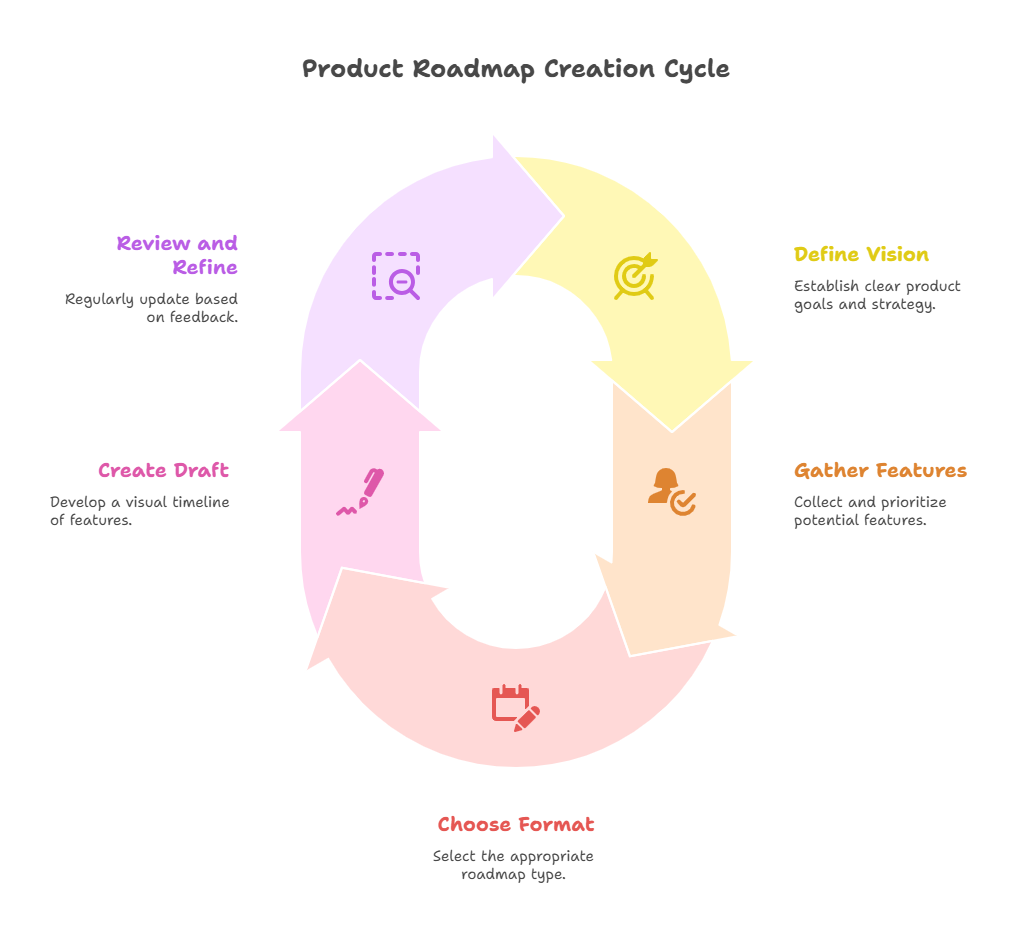How to Build a Product Roadmap: A Step-by-Step Guide
Learn how to create an effective product roadmap that aligns teams, prioritizes features, and drives your product vision to success with this practical guide.
What is a Product Roadmap?
A product roadmap is a living strategic document that outlines the vision, goals, and planned development of a product over time. It serves as a communication vehicle for aligning teams and stakeholders around what you're building, when you'll be working on features, and why certain priorities matter. As ProductBoard describes, once you align your team behind a common product vision and objectives, the roadmap becomes the working draft that communicates your development plans.
Why You Need a Product Roadmap
Building a product without a roadmap is like trying to assemble IKEA furniture without instructions—you'll likely end up with missing screws and extra parts. A well-crafted roadmap provides several critical benefits:
- Team alignment: Keeps everyone focused on common goals and priorities
- Stakeholder communication: Clearly shows what's being built and why
- Strategic planning: Helps coordinate complex projects with many moving parts
- Priority justification: Explains why certain features take precedence over others
As Lyssna notes, a product roadmap is not just a planning tool but a communication vehicle for aligning teams and stakeholders across the organization.
5 Essential Steps to Create Your Product Roadmap

Define Your Product Vision and Strategy
Before you start plotting features on a timeline, you need a clear product vision and strategic objectives. This foundation ensures every item on your roadmap contributes to your overall business goals. Ask yourself: What problem are we solving? Who are we solving it for? What makes our solution unique?
Gather and Prioritize Features
Collect potential features from customer feedback, market research, competitive analysis, and internal stakeholders. Then, use a prioritization framework to determine which items deliver the most value. Consider factors like customer impact, business value, and implementation effort.
Choose Your Roadmap Format
Different situations call for different roadmap types. ProductBoard suggests considering an agile roadmap if your organization serves customer segments that are often in flux, when you're expanding into new markets, or if you need greater clarity about how products are changing and why.
Create the Working Draft
This is where you translate your prioritized features into a visual timeline. Focus on communicating the products and features you're building, when you'll be working on them, roughly when they'll be released, and why they're priorities. Use this draft to engage with team members to build consensus about how your product will evolve.
Review and Refine Regularly
A product roadmap is a living document that should evolve as you gather new information. Schedule regular reviews to adjust priorities based on customer feedback, market changes, and team capacity. This ensures your roadmap remains relevant and actionable.
Best Practices for Effective Roadmaps
- Keep it simple: Focus on the big picture rather than every minor detail
- Be flexible: Allow room for adjustments as circumstances change
- Communicate clearly: Use language that all stakeholders can understand
- Focus on outcomes: Emphasize the benefits and value delivered, not just features
- Use visual elements: Make your roadmap easy to scan and understand at a glance
Visualizing Your Roadmap with Mind Maps
Creating a product roadmap involves connecting multiple strategic elements—from vision and goals to features and timelines. Using a mind map can help you visualize these connections and ensure nothing important gets overlooked. ClipMind offers AI-powered tools that can help you structure your roadmap planning process and create visual representations that make complex relationships clear.
Whether you're a product manager, marketer, or entrepreneur, building a solid product roadmap is essential for turning your vision into reality. By following these steps and regularly refining your approach, you'll create a roadmap that not only guides your development efforts but also inspires your team and stakeholders.
Ready to start building your product roadmap? Try the ClipMind Project Planner to organize your thoughts and create a visual plan that brings your product vision to life.
 ClipMind
ClipMind